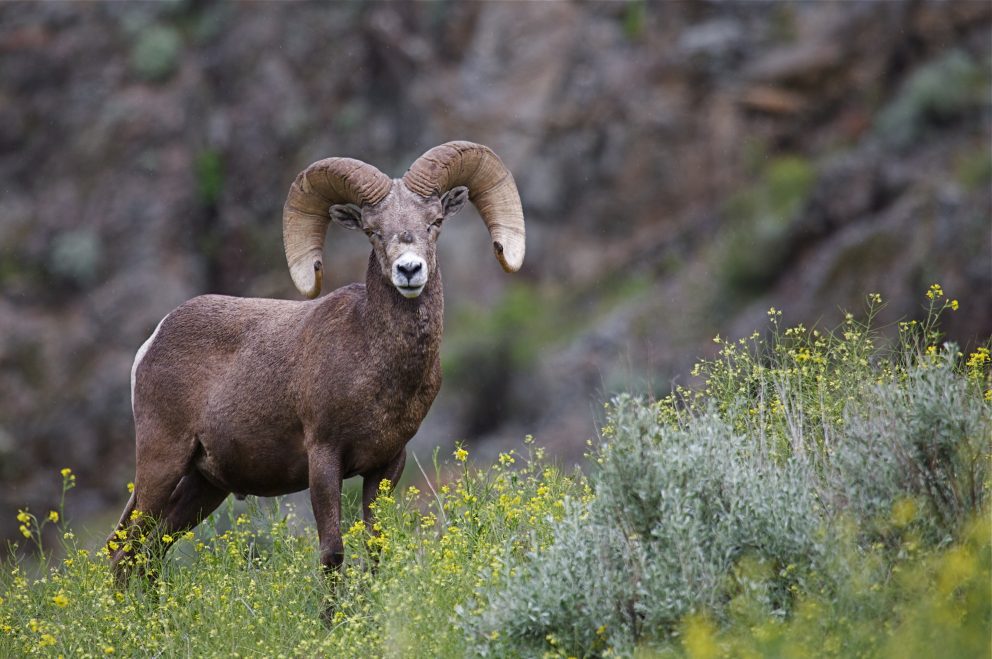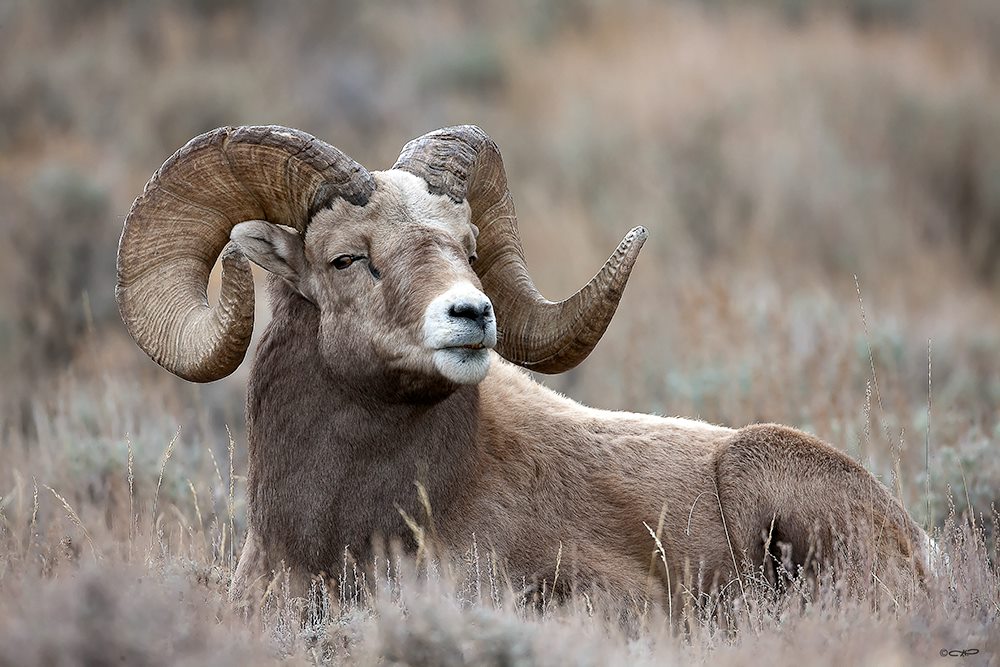- SCIENTIFIC NAME
- Ovis canadensis canadensis
- CLASSIFICATION
- Mammal
- LIFE SPAN
- 9-12 Years
- SIZE
- 60-65” | 150-300lbs
- STATE CONSERVATION STATUS
-
- Priority Species
- FEDERAL CONSERVATION STATUS
- Least Concern
- GAME STATUS
- Game
- GAME TYPE
- Big Game
- Washoe
- Humboldt
- Pershing
- Churchill
- Mineral
- Lyon
- Douglas
- Carson City
- Storey
- Elko
- Lander
- Eureka
- White Pine
- Esmeralda
- Nye
- Lincoln
- Clark
Habitat & Range
Rocky Mountain Bighorn Sheep inhabit grassy mountain slopes, alpine meadows, and foothills near rugged, rocky cliffs and bluffs.
- Alpine and Tundra
- Cliffs and Canyons
- Desert Washes
Threats
- Disease
- Habitat Fragmentation
- Habitat Loss
Natural History
Rocky Mountain Bighorn Sheep rams (males) will band together in the spring and summer, while ewes (female bighorn sheep) and their babies will form separate groups. During winter, the separate groups will come together to form larger herds. Mating season, called the “rut”, starts in fall and rams will compete to mate with females. Ewes will have one lamb during spring to early summer. These sheep graze on grasses, sedges, and clover in warmer months and willow, holly, cactus, and sage in the cooler months. When they aren’t grazing, they lie down and chew their cud. Bighorn Sheep can go without drinking water for months at a time because they get all the necessary liquids and electrolytes from the plants that they eat.
Fun Facts














